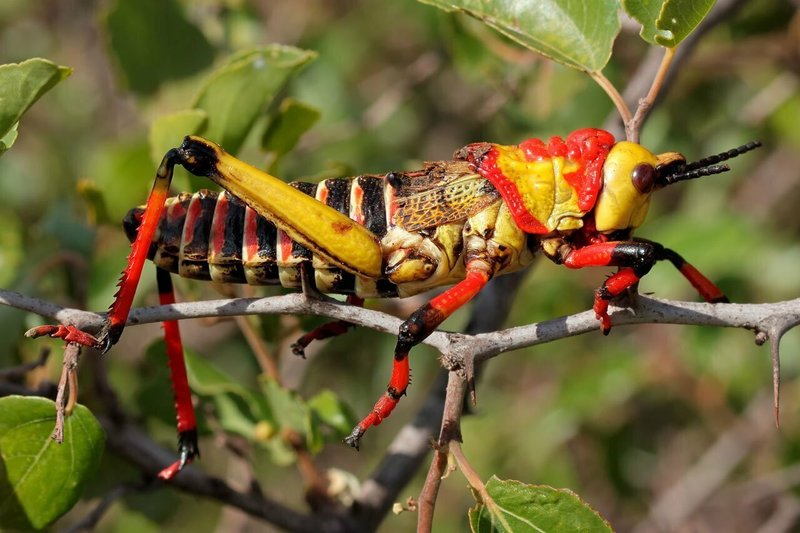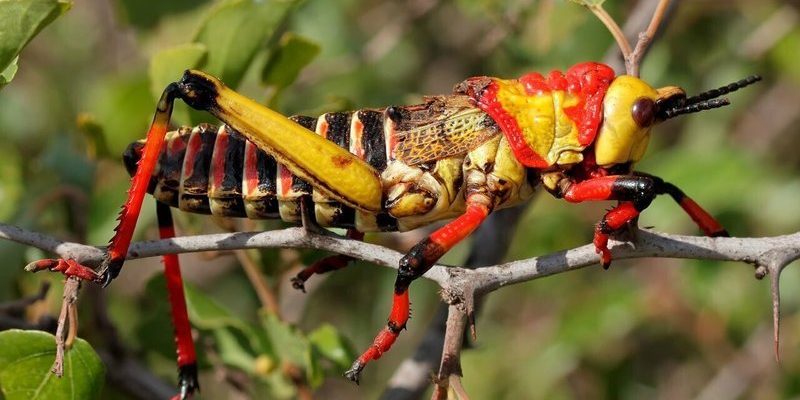
Let’s dive into some of the common misconceptions about locusts. Whether you’re curious about their impact on agriculture or just want to impress your friends with interesting bug facts, this article is for you. After all, understanding locusts helps us appreciate their complex role in nature and agriculture.
Myth 1: All Grasshoppers Are Locusts
You might be surprised to learn that not every grasshopper is a locust, though they share many similarities. Essentially, locusts are a type of grasshopper, but they have some unique behaviors and characteristics that set them apart.
Locusts belong to a specific subfamily called Acridinae, and they undergo what’s known as phase polyphenism. This means that under certain environmental conditions, like overcrowding, they can transition from a solitary phase (acting like regular grasshoppers) to a gregarious phase. In the gregarious phase, locusts change color, behavior, and even their reproductive rates. You might be wondering how that affects their swarming behavior; it’s all about their ability to communicate and synchronize with one another.
So while all locusts are technically grasshoppers, the reverse isn’t true. Next time you spot a grasshopper, just remember: it might be a peaceful little critter, not a looming plague!
Myth 2: Locusts Are Always Dangerous
It’s easy to see why people think locusts are nothing but trouble. Swarms can eat through entire fields in a matter of hours, leading to food shortages and economic issues. However, calling locusts “always dangerous” misses the bigger picture.
Locusts play a vital role in some ecosystems. In their gregarious phase, they can help with nutrient cycling and aeration of the soil. Plus, they serve as a food source for many birds and other predators. It’s like a double-edged sword; while they can cause destruction, they also support the food web in various ways.
In a balanced ecosystem, locust populations can fluctuate, offering benefits to other species. The key is managing their numbers to prevent swarming, rather than viewing them as purely harmful.
Myth 3: Locusts Only Appear in Certain Parts of the World
You might think that locusts are limited to arid regions, but they can actually be found across various continents. While they thrive in dry climates, especially in Africa, Asia, and Australia, they can also appear in places with different weather conditions.
For example, the desert locust, one of the most notorious species, has shown it can adapt to various environments. It has been spotted in urban areas or even near agricultural lands, creating havoc in unexpected places. Think of them like travelers; they can move around, but their preferences lean toward warmer, drier areas.
Understanding their habitat range also helps us manage and prevent potential swarming before it starts.
Myth 4: Locusts Are Just Big Bugs
Many people think of locusts merely as oversized insects, but they have fascinating biology that goes way beyond that. These creatures are equipped with specialized structures and behaviors that allow them to thrive in high-density populations.
For starters, locusts have powerful hind legs that let them jump incredible distances—up to 20 times their body length! This helps them escape predators and quickly travel to food sources. When you see a swarm, it’s not just a mass of bugs; it’s a well-coordinated group that can cover large areas rapidly.
Additionally, locusts have unique adaptations for their gregarious phase, including changes in their digestive tract that allow them to consume vast amounts of food efficiently. This ability enables them to swarm and reproduce rapidly, ensuring their survival when environmental conditions are right.
Myth 5: All Swarms Are the Same Size and Behavior
You might picture locusts swarming as an unstoppable force, but not all swarms are created equally. Some swarms can consist of millions of locusts, while others may contain only thousands. The size and behavior of a swarm often depend on several factors, including environmental conditions and the species of locust.
For example, the desert locust can form incredibly dense swarms, consuming everything in their path. Other species might swarm but in smaller, less destructive numbers. Factors like food availability, weather, and even the presence of predators can influence how a swarm behaves.
Understanding these variations helps in managing outbreaks effectively. Not all swarms pose the same risk, and knowing what type of swarm you’re dealing with can make a huge difference.
Myth 6: Locusts Are Immune to Weather Changes
Another common belief is that locusts can withstand any weather condition. In reality, while they can adapt to some changes, they are still affected by climate. Rainfall patterns, temperature shifts, and environmental conditions can significantly impact their populations.
For example, heavy rains can lead to increased vegetation, which might seem good, but it can also trigger gregarious behavior. On the other hand, drought can severely limit their food sources, leading to population declines. So, while locusts are resilient in many ways, they are not invincible to the whims of mother nature.
Recognizing how weather impacts locusts can help farmers and researchers anticipate potential swarms and take preventive measures.
Myth 7: You Can’t Do Anything to Control Locusts
You might think that once a swarm starts, it’s game over. But the truth is, there are methods to manage and control locust populations effectively. Governments and agricultural organizations often use a combination of monitoring, early warning systems, and even biological control methods to keep locusts in check.
For instance, some countries deploy aerial surveys to monitor locust populations. When they get a reading that a swarm is forming, they can act quickly, sometimes using nature’s allies, like predatory insects, to help manage the locust population.
Educating communities about locust life cycles and behaviors also plays a crucial role. The more people understand how locusts operate, the better prepared they’ll be to manage them.
Locusts are often misunderstood creatures caught in a cycle of myths and misconceptions. By peeling back these layers, we can appreciate their complexities and the critical roles they play in ecosystems and agriculture. From their unique biological traits to the varying sizes of swarms, locusts are more than just pests.
As we continue to learn more about these fascinating insects, we can approach their management with greater knowledge and empathy. So, the next time you hear about locusts, remember there’s a lot more beneath the surface than just swarming chaos. Understanding them not only surprises but can also provide practical solutions for dealing with their impacts on agriculture and ecosystems.

